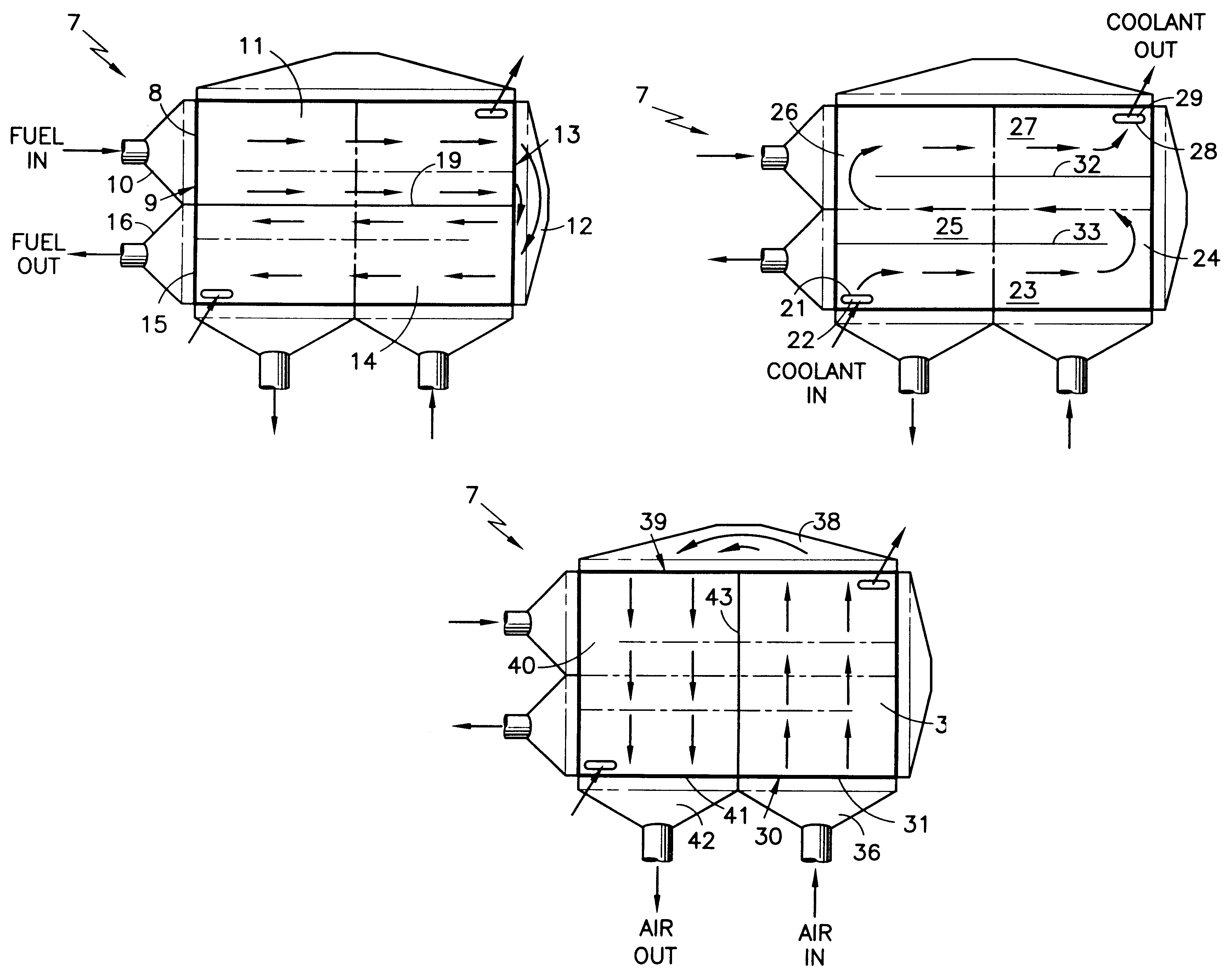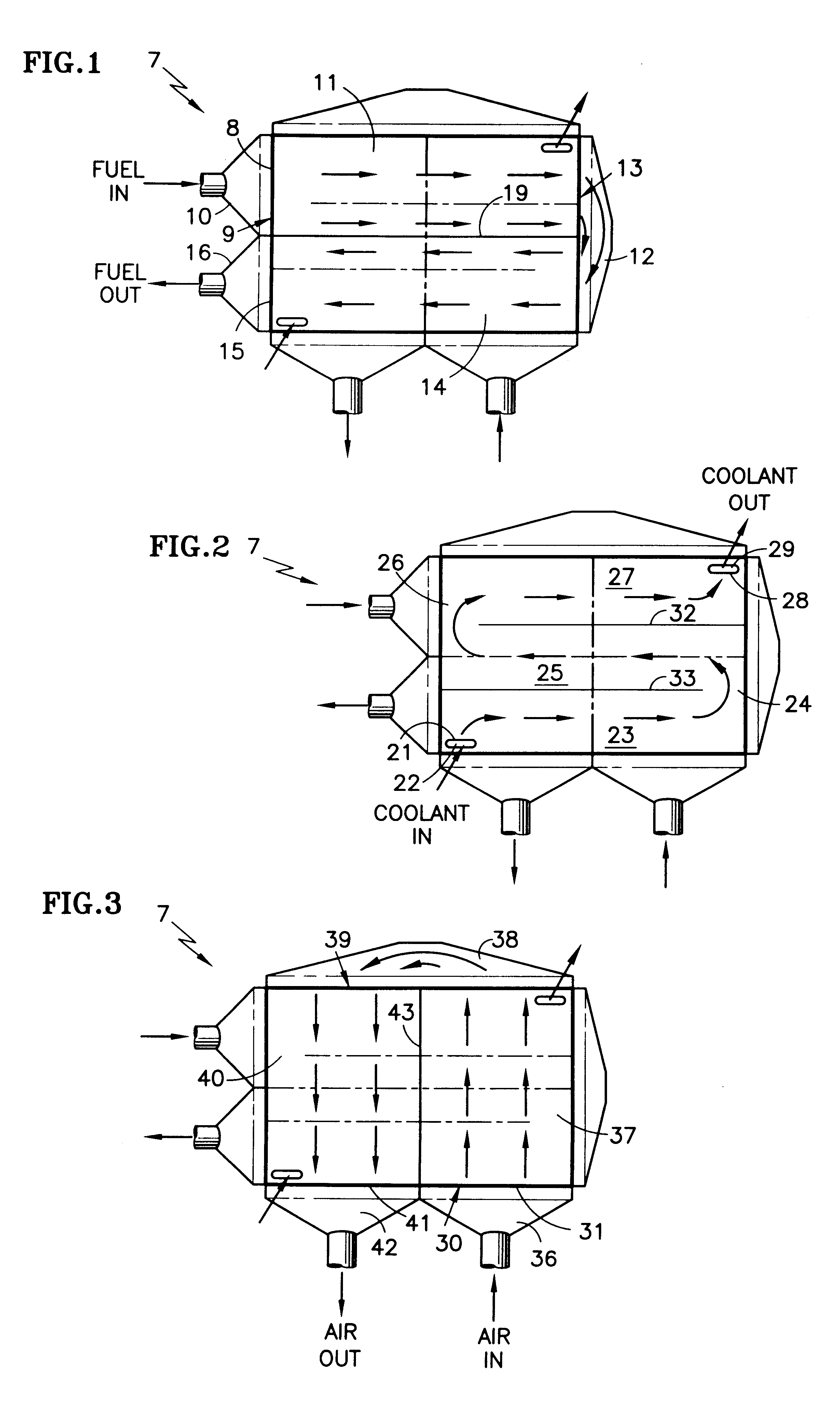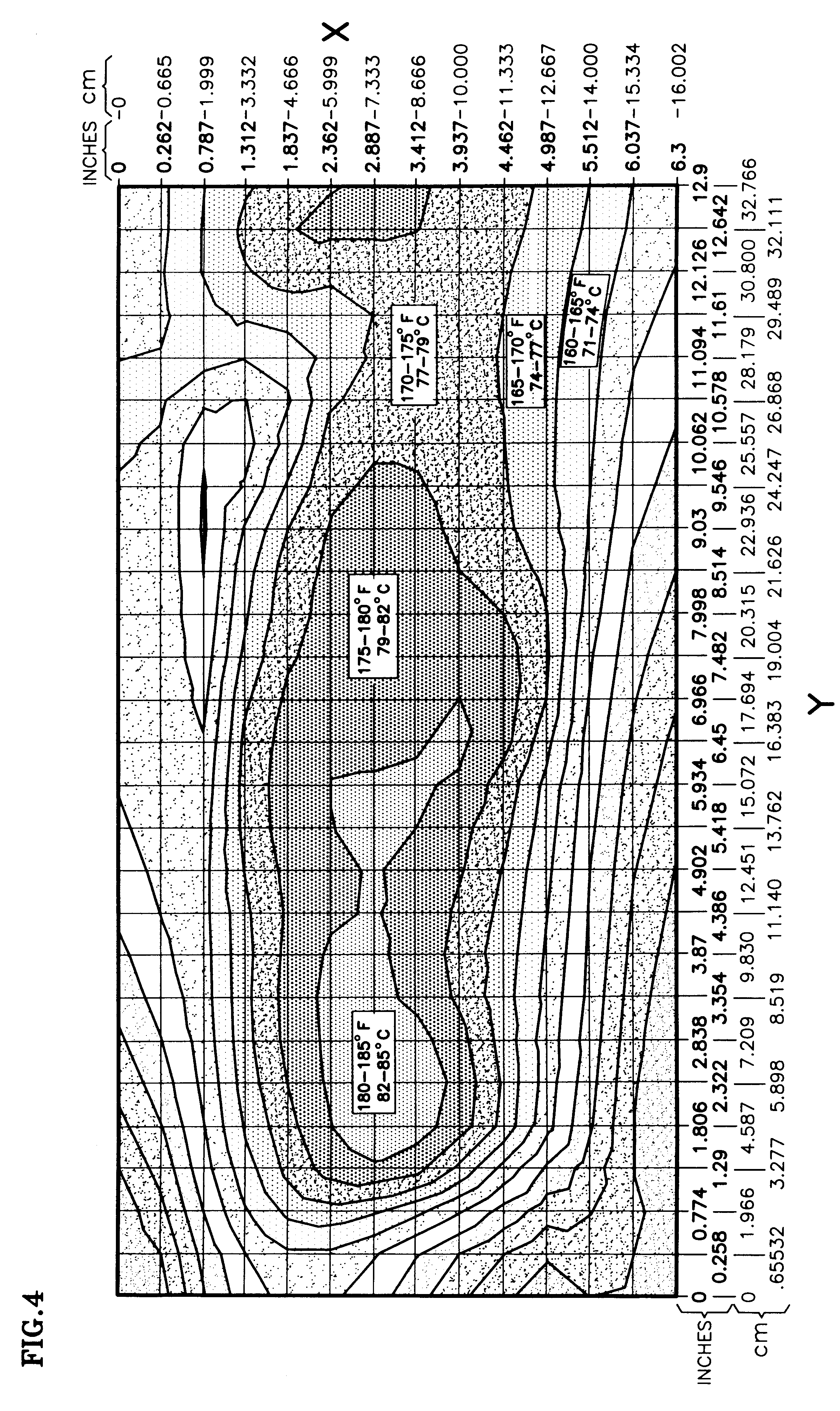Fluid flow control for cool, efficient fuel cell operation
a technology of efficient fuel cell and flow control, which is applied in the direction of fuel cell details, fuel cells, electrochemical generators, etc., can solve the problems of loss of efficiency in random areas of the fuel cell stack, and achieve the effects of reducing the maximum temperature in each cell, increasing air utilization, and high performan
- Summary
- Abstract
- Description
- Claims
- Application Information
AI Technical Summary
Benefits of technology
Problems solved by technology
Method used
Image
Examples
Embodiment Construction
Referring to FIGS. 1-3, each fuel cell of a fuel cell stack 9 includes a fuel inlet 8 at a first end edge 9 of the fuel cell, fed by a fuel inlet manifold 10, a first-pass fuel flow field 11, a fuel turnaround manifold 12 at a second end edge 13, a second-pass fuel flow field 14, and a fuel outlet 15 at the first end edge 9, which feeds a fuel outlet manifold 16. The delineation between first pass 11 and second pass 14 flow fields is illustrated by a line 19 which is shown solid in FIG. 1 and as a double dot dash line in FIGS. 2 and 3. Each fuel cell of the fuel cell stack 9 also includes a coolant inlet 21 fed by an internal coolant inlet manifold 22, a first straight flow field portion 23, a first turnaround flow field portion 24, a second straight flow field portion 25, a second turnaround flow field portion 26, a third straight flow field portion 27, and a coolant outlet 28 which feeds into an internal coolant outlet manifold 29. The demarcation between the direction of coolant ...
PUM
| Property | Measurement | Unit |
|---|---|---|
| temperature | aaaaa | aaaaa |
| exit temperature | aaaaa | aaaaa |
| temperature | aaaaa | aaaaa |
Abstract
Description
Claims
Application Information
 Login to View More
Login to View More - R&D
- Intellectual Property
- Life Sciences
- Materials
- Tech Scout
- Unparalleled Data Quality
- Higher Quality Content
- 60% Fewer Hallucinations
Browse by: Latest US Patents, China's latest patents, Technical Efficacy Thesaurus, Application Domain, Technology Topic, Popular Technical Reports.
© 2025 PatSnap. All rights reserved.Legal|Privacy policy|Modern Slavery Act Transparency Statement|Sitemap|About US| Contact US: help@patsnap.com



